Welcome to our Curlew Notes and Quotes page. Every day for the next 26 days, we will add a new interesting fact and quote about our beloved Curlews, To ensure you don’t miss anything, please bookmark this page and check back regularly for updates.
Day 1

Fact:
Eurasian Curlew’s binomial Scientific name is Numenius Arquata.
The scientific name draws its origins from Latin and translates as new moon, archer’s bow. These names are thought to have been inspired by the characteristic arc in the Curlews Bill.
Quotes:
“A curve enough to calculate the field’s circle and its heart of eggs in the cold grass”
– Gillian Clarke – Curlew from Anthology Curlew Calling
“I love exploring quiet estuaries, well away from the hubub of modern life, where all you may hear is the haunting cry of the occasional curlew…”
– David Bellamy 2019 – Painting the haunting calm of an estuary
Day 2
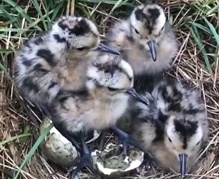
Fact:
The Eurasian Curlew is the largest wading bird in Europe. The species can be found across a vast range of countries and continents from Eastern Siberia to western Africa and across Europe and Scandinavia, but the UK holds @ 25% of both breeding and over-wintering birds – more than any other country.
Quote:
“The mating call sang out from my device, and the man’s smile froze. He stared at the screen. “I can’t believe I have forgotten. Please turn it off” he said and I noticed the tears that were beginning to run down his cheeks.”
– Mary Colwell, The Power of Curlews, Curlew Calling Anthology
Day 3

Fact:
The old Scottish name for a Curlew is a Whaup or Great Whaup. The modern-day name is derived from the Old French Courlieu meaning messenger.
A group of curlews may be called a curfew, a salon, or skein of curlews.
Quote:
“Curlew or whaup? Which is it to me? The English of books or the fading Scots, maybe closer to the bird’s wild home? Textbook reality or romantic poetry? Or both…”
– SCHRÖDINGER’S CURLEW by Alan McClure
Day 4
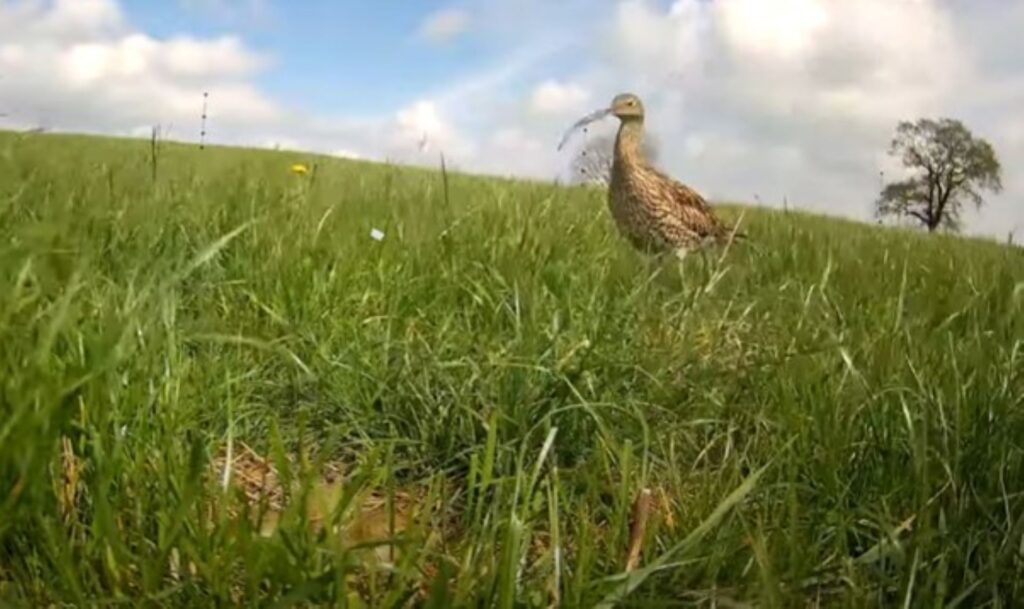
Fact:
The curlew’s diet varies depending on the season and surrounding habitat. In winter they use their long bill to probe into soft mud for crabs, ragworms, lugworms, cockles, marine snails, shrimps, small shellfish and earthworms. In spring and summer they feed on insects and larvae, spiders and worms.
Quote:
“Curlews themselves hold importance as a flagship species in conservation education. Their soprano cry is an icon of the natural British soundscape and has inspired copious naturalists, authors and poets alike.”
– The Ecological Importance of Curlews by Kate Ellis for Curlew Action“
Day 5

Fact:
Migratory habits. Curlews spend winter on coastal and estuarine habitats, capitalising on the abundance of invertebrates in habitats like mudflats. Young birds visiting winter roosts for the first time stay several years to mature and grow before returning inland to breed. They are most often seen in groups at estuaries and coasts and these sightings feature in many of our daily literary quotes.
Quote:
“A Curlew’s bill may be the feature that catches our eye, but when it opens and starts broadcasting, it is the sound that captures our soul.”
– Curlew Moon by Mary Colwell 2018
Day 6

Fact:
Curlew return to their inland breeding habitats in Spring. In Curlew Country first birds are usually sighted around Valentine’s day and nationally these birds are known as the Herald of Spring. Most Curlew Country breeding birds return in March and April but the earliest in February and the latest in May!
Quote:
“It’s late this year, the curlew’s crescendo – that gathering call, swelling the falling over green-gold marshes.”
– Barbara Hickson, Curlews on Hare Apple Tree Fell, Curlew Calling
Day 7

Fact:
World Curlew day on 21st April is when most Curlew nests have an average of one egg in the nest. It falls on the birthday of which famous naturalist?..John Muir! Upland birds on or nearby managed grouse moors and reserves nest earlier, possibly due to the better nesting environment where they benefit from land managed for ground-nesting birds. Curlew Country pairs do not usually start laying a clutch until the end of April. This year our first nest had a full clutch of eggs on St. George’s day.
Quote:
“I fret ..about the curlew, as though it is their migratory wingbeats that turn the earth, and should they fail to appear we will have entered some ecological end time. But they are home, home to breed”
– John Lewis-Stempel, Meadowland
Day 8

Fact:
World Curlew Day, 21st April is also the feast day of the little-known Welsh saint, St Beuno, of the 7th Century. Legend has it that Beuno was so grateful to a curlew for rescuing his prayer book after it fell into the sea, he blessed the bird and asked for all curlews to be protected.
Quote:
“Of all bird songs or sounds known to me, there is none that I would prefer than the spring notes of the curlew…The notes do not sound passionate they suggest peace, rest, healing joy, an assurance of happiness past, present and to come. To listen to curlews on a bright, clear April day, with the fullness of spring still in anticipation, is one of the best experiences that a lover of birds can have.”
– The Charm of Birds by Lord Grey, 1999
Day 9
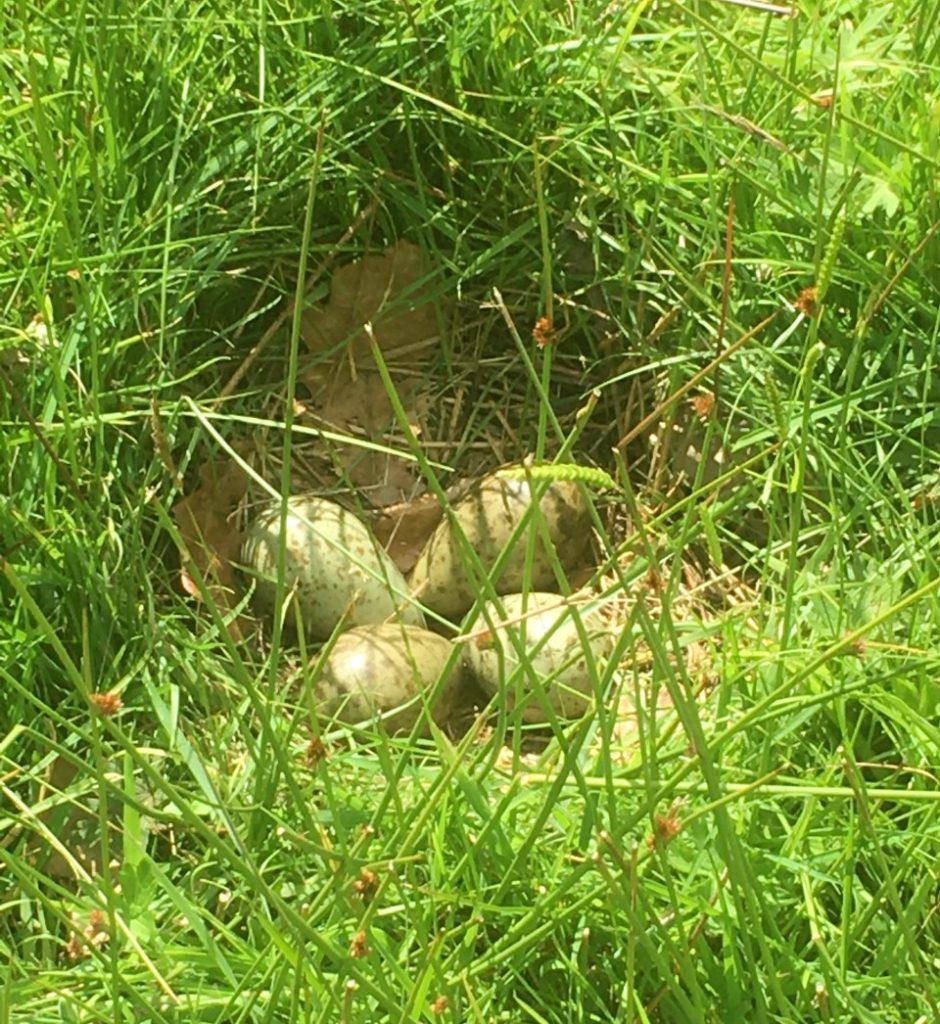
Fact:
Curlew currently have a red-listed species conservation status meaning the species is considered near threatened. In Wales, modelling suggests that without serious intervention, Curlew will die out by 2033. The productivity rates in England suggest that the fortunes of
English birds are similar. Graham Appleton (ex BTO) has calculated that in England, 10,000 chicks are needed just to keep the existing population at the same level. Many more chicks are needed for recovery.
Quote:
“Grandad knew of dozens, Father a few, My son will not know you here – His sky wide eyes will not witness your wildness. Perhaps on some faraway shore. But not here In the heart of your home – and mine.”
– A Shropshire Curlew, Lucy Grove, Curlew Calling, An Anthology
Day 10

Fact:
There are only a handful of populations of breeding curlews south of the Pennines. The Curlew Country lowland farmland population in South Shropshire and east Wales is significant as it is one of them. The landscape is more diverse character and use than river valleys, but typical of many farmland curlew nesting sites in lowland hill.
Quote:
“Your mournful trill, vibrato cry moves this man and mountains. Over long-horizoned sand sea and summer’s upland leys Stubble, fallow, grasshopper, beetle vacuumed and sealed my memories looking back to springtime.”
– Curlew by Napier Marten
Day 11

Fact:
Curlews are long associated with farmland. Within living memory people talk about ‘clouds’ of curlews and lapwings rising from fields. Curlews traditionally nested in hay meadows and as part of the natural ecosystem defended themselves against predators sometimes with other nesting waders and as a group.co-operating with one another to defend against attack. Whilst known to be territorial – defending their patch against intrusion, their territories were likely to have been much smaller historically and are still smaller in beneficially managed upland areas. The cooperative nature of curlews whilst defending against predators leads to them also being described as loosely territorial.
Quote:
“‘What would you give for the call of a curlew?…They are leaving. They are leaving us because we gave them cash crop furrows and predation of foxes and EU crows……What would you give for the last call of the Curlew?”
– Curlew Calling by John Fox, from Curlew Calling an Anthology
Day 12
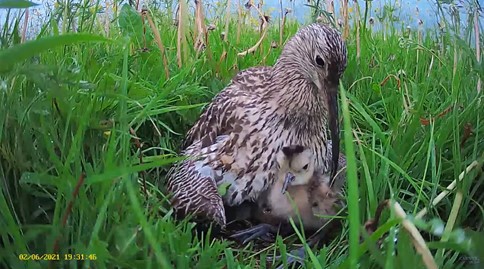
Fact:
Bill or Beak? Ornithologists tend to use the term bill especially for waders. Curlews use their long bills to probe soft ground where they find invertebrates. We observe them in Curlew Country finding worms with the tip of their beaks and then throwing up their heads to carry the worm down the bill and swallow it (golloping our Ornithologist Tony would say).
Quote:
“The curlew, seen as a judge of the river, has the bill of a monster to make it look very sinister.
The reason for the monster was to make sure that none of the coraclers came to any harm. He was the judge and jury of the river. If a coracler was judged guilty of doing harm to his fellow coraclers he would be chased from the river and driven down to the underworld.
The coraclers were well behaved!”
– Old English Folklore
Day 13
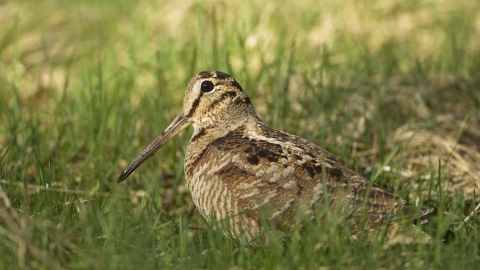
Fact:
Did you know that Males are smaller than Females? The average Female weighs just over 200g more than the average Male. Females also have longer bills. These differences are thought to reduce resource competition between the sexes.
Quote:
“It would be a poor creature who cannot delight in the guttural sounds of a pair of courting curlews.”
– Desmond Nethersole Thompson
Day 14
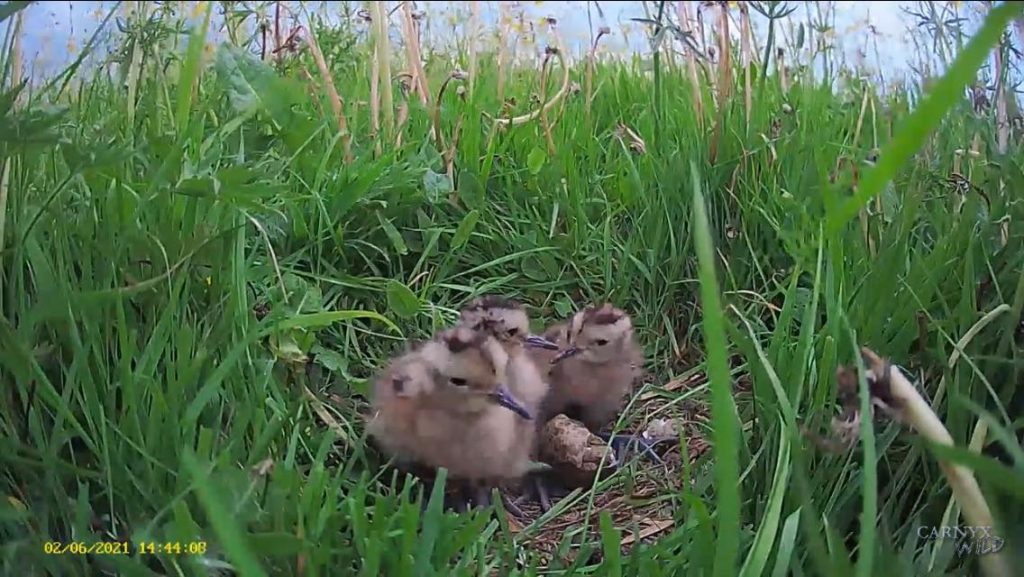
Fact:
Males and females of the same pair over-winter at different sites and return independently to the site. The male often arrives first and finds its territory When chicks arrive both birds guard the chicks, but the female departs on migration several weeks after the chicks have hatched and some weeks before the chicks fully fledge. The male also departs one day or more before the chicks.
Quote:
“Curlews bind the coast to the inland mountain slopes, and pretty much everything in between…. They reinforce our global responsibility for life on an interconnected planet.”
– Curlew Moon by Mary Colwell 2018
Day 15
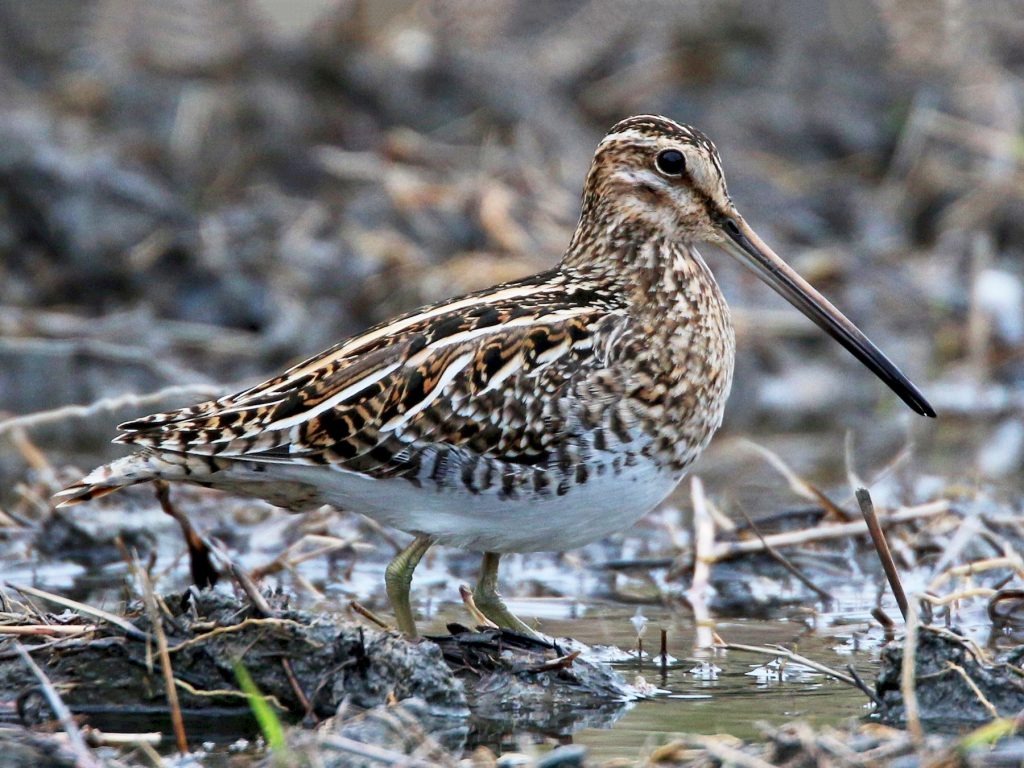
Fact:
Curlews are territory faithful. This means that pairs return to the same area each year to breed. On lowland farmland these territories have become much larger as different farming activities create different habitats in former nesting spots which no longer look suitable to a returning Curlew looking for a good spot to nest in The territories span more than one field and land in different ownerships. This makes it challenging for the policy makers designing agri-environment schemes as a funding system that is flexible and spans the landscape is needed. Current scheme designs only work on a field by field basis and a few on farms, locking farmers into the same actions over several years which won’t serve most curlew well.
Quote:
“Trailing bubbles of music over the squelchy hillside… music as desolate, as beautiful as your loved places, mountainy marshes and glistening mudflats by the stealthy sea…”
– Scottish poet Norman Alexander MacCaig (1910 – 1996) describes the Curlew’s voice.
Day 16
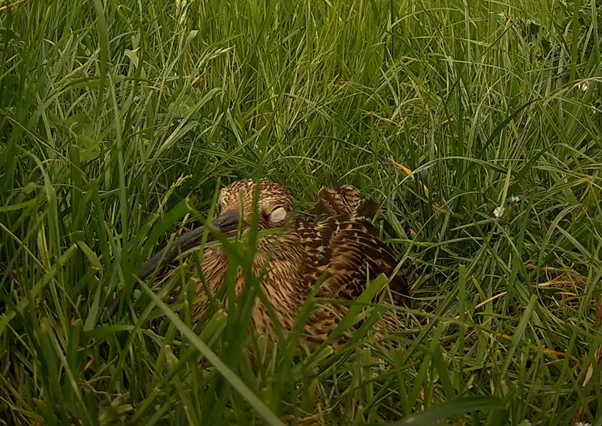
Fact:
Pairs try to choose a nesting site that is quiet, without lots of farm animals and away from other agricultural activities or human disturbance going on. Choosing a site that is away from predators is essential. Curlews avoid sights near cover or perches where foxes could hide and predate eggs and chicks or where a corvid might sit.
Quote:
“Incensed wing flames. An aerial attack Sputtering his aggression In machine-gun rhythms.”
– Curlews Nest by Clyde Holmes (Description of a curlew responding to threat from predation).
Day 17

Fact:
The male creates a Nest cup in the vegetation formed swivelling on his haunches. He often creates several in different sites within a field for a female to choose from. Who said chivalry is dead?
Quote:
“Nesting in a scrape, scourged and scorched in your innocence By ever present man, To see and hear the last of your kind and song taken, How lonely I shall be”
– Curlew by Napier Marten
Day 18
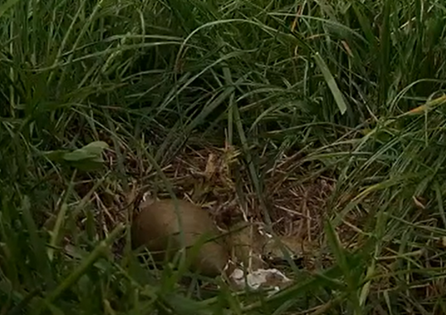
Fact:
Pairs lay between 2 and 6 eggs (usually three or four). A second or occasionally a third attempt at nesting is made if failure occurs at egg stage but attempts beyond the first egg lay usually contain fewer eggs in the clutch.. The eggs are laid sequentially one each day or every other day.
Quote:
“I cannot help but admire your bravery and the skill with which you missed my skull by inches. How are you to know, my crescent beaked Nemesis, that I am, in fact a fully paid up member of the (conservation organisation) and have no design on the eggs you’ve hidden.”
– Incoming by Jonathan Humble (describing a curlew mobbing him).
Day 19

Fact:
Both male and female take it in turns to incubate the eggs. Changing shifts regularly allows the partner to go and feed. The partner bird often feeds as close by as it can when not incubating, to act as an alert if threats such as predators or machinery appear..
Quote:
“Good breeding and feeding curlew habitats are associated with a heterogeneous landscape structure, usually positively correlated with greater diversity of plants, insects and birds.”
– Review of the wider societal, biodiversity and ecosystem benefits of curlew recovery in Wales.
Day 20
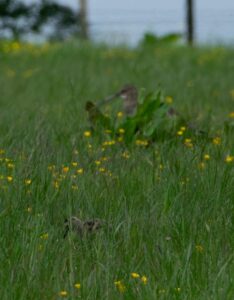
Fact:
Curlews want a dry, fairly level spot on which to nest but need wet ground to probe their long bills in to feed on soil borne invertebrates. Sometimes the bird not incubating will travel large distances at night to find a suitable feeding or roosting spot.
Quote:
“Unseen, out in the middle of that swathe of buttercups and grass was a pair of curlew and a nest.”
– Karen Lloyd, Curlew Calling, an Anthology
Day 21

Fact:
The nest site has a temporary electric fence around it protecting the nest from most mammalian predators and accidental agricultural activity. Our farming partners are generally relieved when the nests have been marked. The curlews will be hiding from them but with a fence around they know that they will not accidentally damage the nest.
Quote:
“When I landed in the republic of conscience it was so noiseless when the engines stopped I could hear a curlew high above the runway”.
– Heaney’s From the Republic of Conscience
Day 22
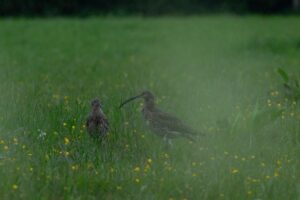
Fact:
Incubation takes 28-30 days on average. The eggs hatch sequentially and the parent broods each chick after it arrives to dry it out and keep it warm.
Quote:
“The Curlew was famous for its whistling and screeching calls, which were believed to foretell the arrival of rain or stormy weather”.
– Mac Coiter
Day 23
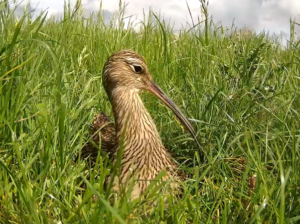
Fact:
The adult curlew do not feed the chicks which forage themselves once brooded and able to leave the nest cup this level of post-hatch independent activity is known as precocial. It can be a struggle for the parent bird to keep the chicks together as those from eggs which hatched first are keen to venture out of the nest and forage, but the adults must stay incubating the remaining eggs.
Quote:
“An aura of wildness surrounds the curlew perhaps more than any other wading bird.”
– Theresa Green – 2011
Day 24

Fact:
Once the eggs have hatched the Curlew family will move out of the nest site to find sufficient food and cover for the chicks. Chicks feed on surface invertebrates until their bills are long enough to start probing into the soil as well. You can hear their bills snapping as they chase and catch insects.
Quote:
“Many people, myself included, associate their sound with the passage of seasons and therefore to cycles of life and death; there might be ghosts in there, but there’s also rebirth and renewal.”
– The Curlew Sounds Project
Day 25
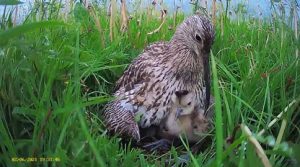
Fact:
Chicks can take between 6 and 8 weeks and sometimes longer to fully fledge. In the Curlew Country area there is an old saying – One month to hatch. Two months to fly.
Quote:
“One of the things that environmentalists have not been so willing or able to impress upon society is the extent to which each biological deficit inflicted by species loss carries a cultural toll. We are robbed of our life companions, sure: but we also forgo all that curlews have inspired in us.”
Day 26
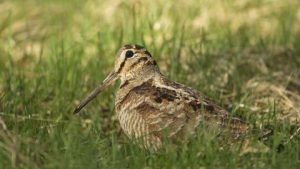
Fact:
To save this iconic species we need appropriate rewards to farmers for crop sacrifice and predator control. Agri-environment schemes (currently known as ELMS) are crucial to support this, but not currently working for lowland Curlew.
Quote:
“Poetry and song echoes the curlew differently when heard with an ear to the curlew’s demise”
– Bethan Roberts
